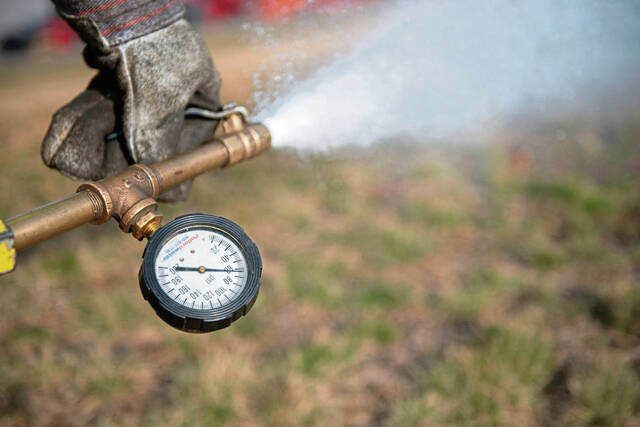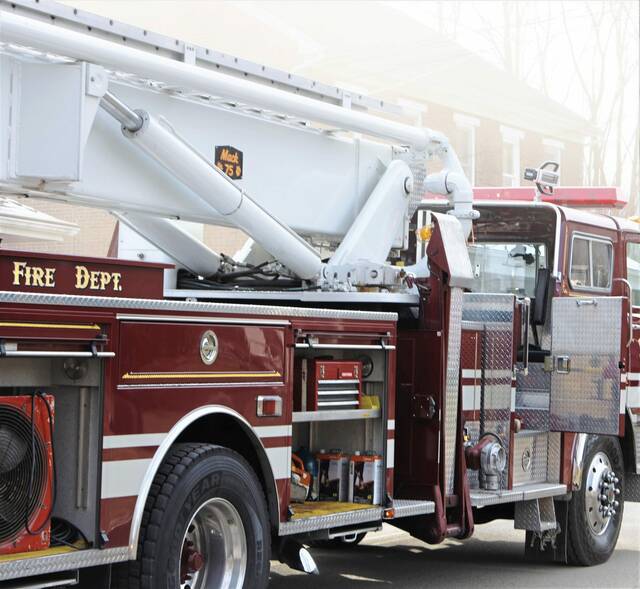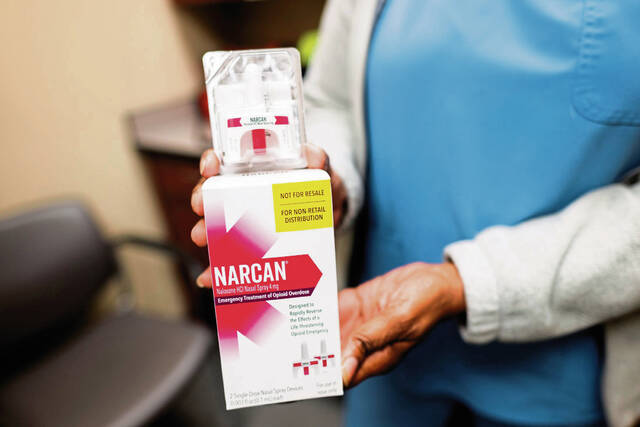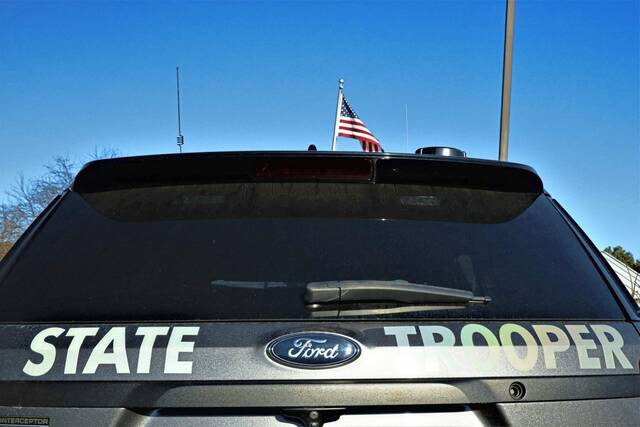There’s no doubt that water flow from at least one hydrant in Hempfield is sufficient to fight a fire.
Maintenance crews on a recent March morning allowed water to gush from an open hydrant as part of a rare test to determine its flow.
Workers measured the hydrant’s static pressure before calculating its output of water from an open valve and a hose with a gauge. The test produced 26 pounds per square inch of water spread out over the nearby area. Residual pressure from a second nearby hydrant remained relatively consistent.
Those results translated to a recorded flow of 795 gallons per minute from the hydrant.
According to standards set by the National Fire Protection Association, hydrant flows of at least 500 gallons per minute are sufficient to fight a fire.
A TribLive investigation found flow tests, such as the one conducted this month by the Municipal Authority of Westmoreland County on its property, are rare and the performances of hydrants throughout the region remain unregulated while data for firefighters is in short supply.
Annually, the authority does between 60 and 80 flow tests, typically by request, officials said. There are 8,800 hydrants in the system spanning five counties. It charges $350 for a flow test of one hydrant and $85 for additional tests.
Municipalities pay MAWC $60 per hydrant annually to cover the costs of maintenance and inspections, which does not include flow tests.
Those fees were increased by $10 for the 2025-26 fiscal year as part the authority’s new budget that included a 9.5% rate hike for water customers.
The fees are expected to raise about $526,000 in revenue.
National Fire Protection Association guidelines call for certain parts of hydrants to be painted specific colors to reflect how much water firefighters can expect to get from them.
Hydrants that have less than 500 gallons of water per minute available should be painted red under NFPA guidelines. Orange hydrants indicate flows of up to 999 gallons per minute, green for flows up to 1,499 gallons per minute and blue for the highest flows.
Plum Borough Municipal Authority recently followed that color code to paint about 600 fire hydrants.
MAWC uses the same colors for its hydrants but bases them on the size of the connecting water lines. Red signifies pipes of 4 inches, while orange, green and blue reflect larger transmission lines, according to authority officials.








